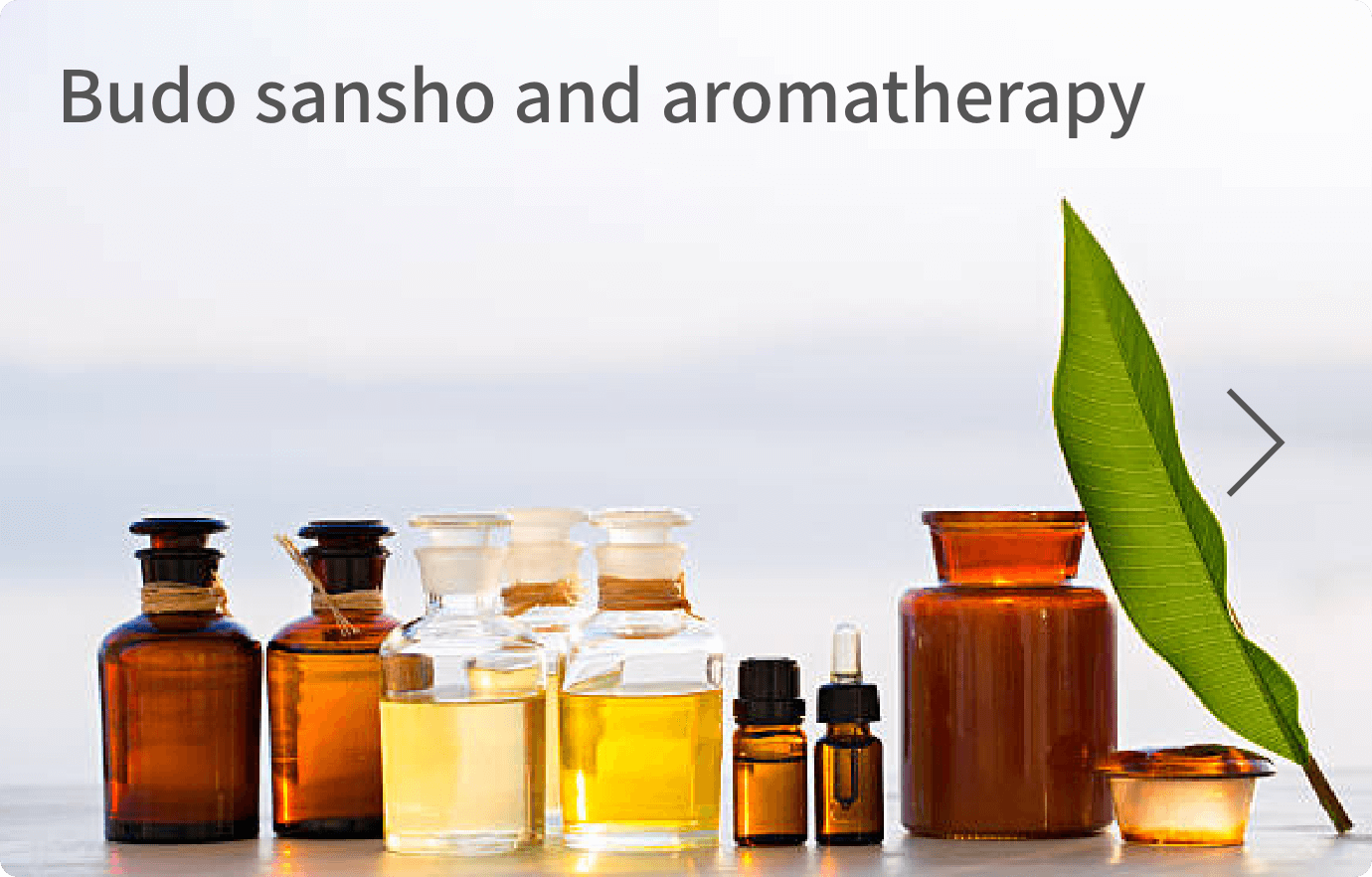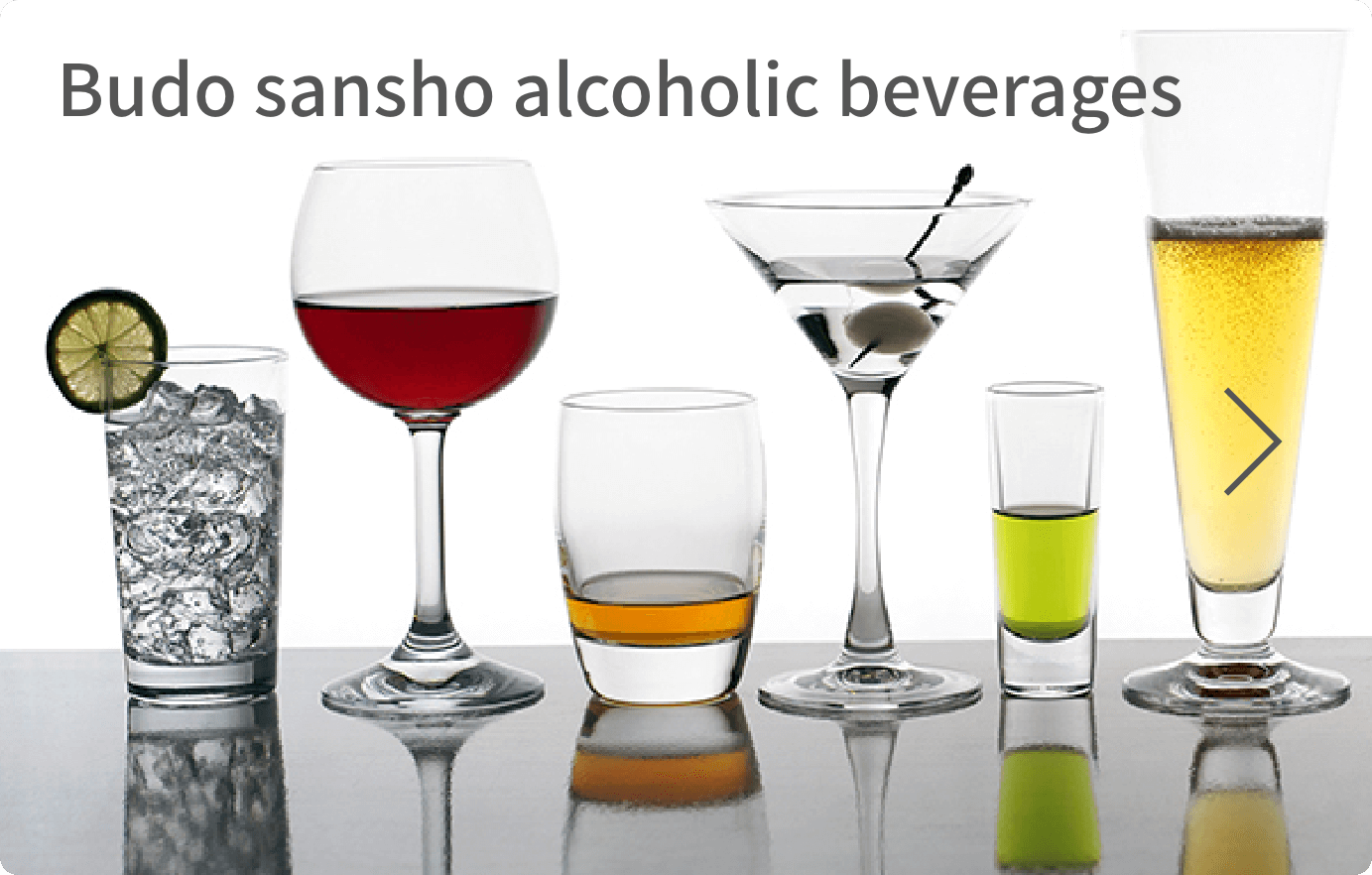Consumer opinion
Kida:When I first had the opportunity to try Nakano B.C.’s budo sansho essential oil, I was surprised by how good the fragrance was. What is your reputation actually like with consumers of the essential oil
Kadowaki:There was a time in the past when we took it to a beauty trade fair. On that occasion, we heard a lot of comments that the fragrance is certainly refreshing, but that after a little while, it sweetens and shifts to being relaxing. I believe that this type of change is rare.
Kida:It was a marvel for me too when after some time the sweetness came out. It is a characteristic I hadn’t noticed before in other budo sansho essential oils that I had used. Is there some reason for this?
Kadowaki:I think the sweetness comes from it being dried sansho. Previously, distillation was done with fruit peel still in a fresh state, but the fragrance was quite powerful. I think perhaps that by going through the drying process, the strong fragrance is subdued slightly, and then a well-balanced fragrance is created.
Kida:What types of uses do consumers have for budo sansho essential oil fragrance?
Kadowaki:We hear that consumers use it to blend with other citrus-based essential oils, to enjoy the fragrance, and for body treatments.
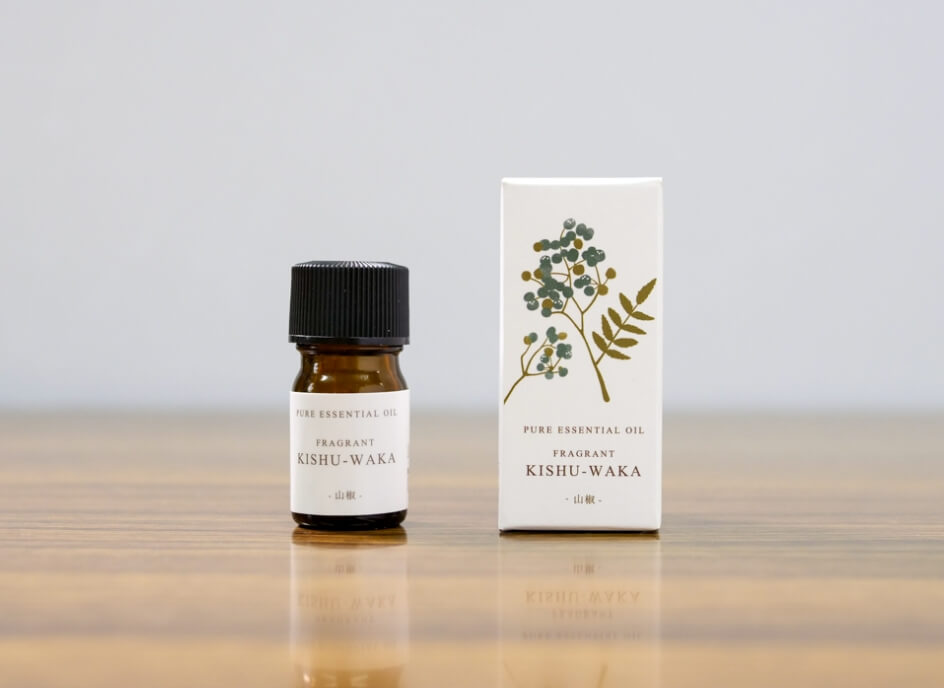
FRAGRANT KISHU-WAKA -Sansho-
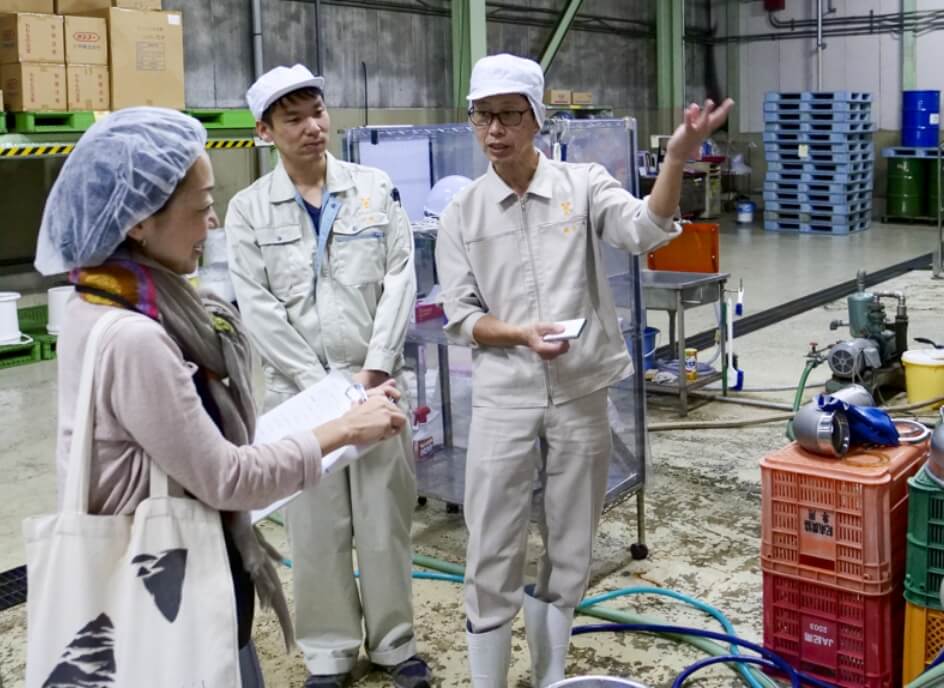
The scene of the interview
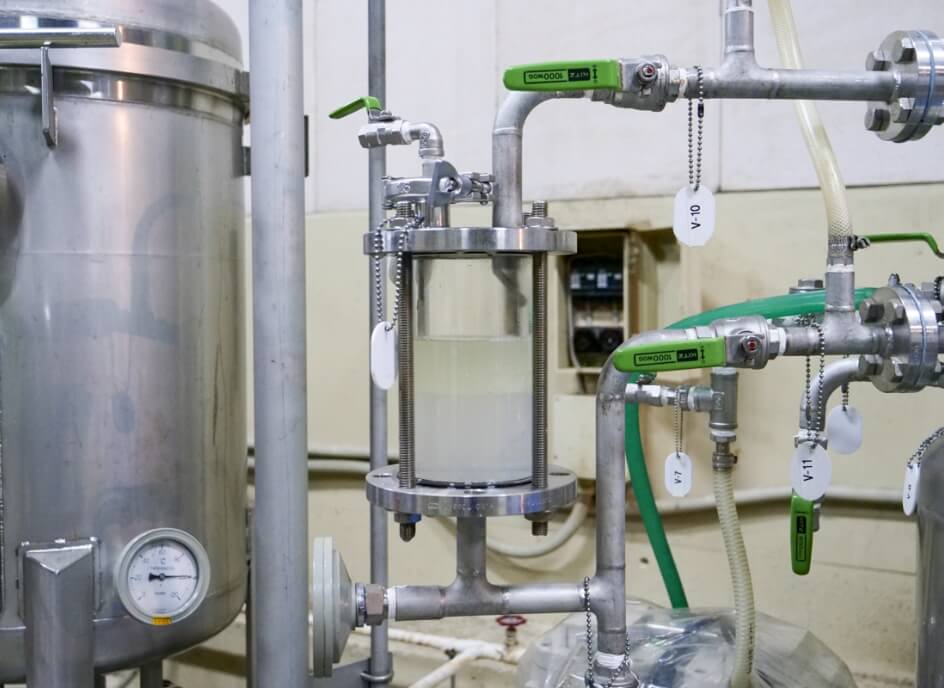
Two-layer system with the upper for essential oil, and the lower for perfume distilled water. Perfume distilled water is regularly moved to the next container.
Anti-obesity effect discovered from budo sansho essential oil (patent pending)
Kida:Last year, I was greatly surprised when the news went out that the protein UCP1, that burns fat and produces heat, increases in the genes of mice that are made to smell sansho fragrance. Firstly, could you please tell me what type of experiment it was?
Kadowaki:We put diffuser stones inside a gauge, and saturated them with sansho essential oil so that the fragrance could continuously be smelt. From that, when we investigated genes, we found out that thermogenic protein UCP1 increases. In other words, the form of the combustion system changes, and we can expect that it leads to metabolic improvement.
Kida:That’s good news for people with lifestyle-related diseases or those who want to diet. Is it necessary to modify the way of smelling the fragrance?
Kadowaki:The effects appear quickly—24 hours later UCP1 values rise suddenly. However, after a while it attenuates. It is thought that this is perhaps due to UCP1 increasing in response to the stimulus and attenuates with habituation, but the cause is unknown at present.
Kida:Previously, since the fragrance of grapefruit stimulates sympathetic nerves, a popular topic of conversation was that it has a slimming effect. Does the fragrance of budo sansho have a similar effect?
Kadowaki:We tried investigating that point. Limonene is a component in grapefruit which works to stimulate sympathetic nerves, and stimulating sympathetic nerves also increase UCP1. Limonene is also found in budo sansho essential oil.
And on that point, we conducted comparative research on fragrances of budo sansho and grapefruit, using the same quantities of limonene. And, budo sansho fragrance increased UCP1 more! We were elated. In other words, it’s not just about limonene; we figured out that the combination of elements in budo sansho essential oil work together.
Kida:So it has an anti-obesity effect, and on top of that the sweet aroma can help you relax. That’s marvelous! Since all you have to do is smell the fragrance, it means there is no pain, no bother—something to be thankful for.
Kadowaki:What I think is one of the best points is that while you can’t eat it day after day, you can attain the stimulus of sansho every day—there is no tingling sensation from the aroma, so you’re able to enjoy the scent every single day. I think it’s excellent because you can use it on a daily basis.
Future developments
Kida:Budo sansho essential oil has a tendency to increase in popularity in summer in particular. The fragrance of citronellal, a component of the essential oil, activates the digestive organs, so I’ve thought that maybe there is the sense that it helps the stomach that is weakened from consuming cold food and drinks. Or, that it is instinctively understood that the fragrance of budo sansho promotes circulation to warm the body. What do you know about those points?
Kadowaki:That is part of the next steps of the research. However, it is also said that smelling fragrance increases the body temperature. It has an impact on low body temperature and immunity, so it is an effect that I want to focus on.
Kida:What types of difficulties do you face when conducting experiments?
Kadowaki:Basically every aspect of conducting experiments is fascinating. For example, thinking about which fragrance to make the mice smell and other things, the procedure itself is also enjoyable.
Kida:When I first came across essential oil of budo sansho produced in Aridagawa Town, I was amazed by the quality of the fragrance. I remember being surprised when I was shown the composition table, since close to fifty percent is geranyl acetate, the component with a sweetness, that is also found in rose and geranium essential oils. It is expensive, with just a tiny amount it gives a fine fragrance, so that makes up for it, and blending it with other essential oils is pleasurable—it is incredibly useful.
Thank you both so much for your time today. I am looking forward to the discovery of even more new functions.

In addition to budo sansho, distillation is also conducted for citrus essential oils produced in Wakayama Prefecture

Dr. Kadowaki, speaking about the joys of research

FRAGRANT KISHU-WAKA Wa-aroma
Nakano B.C. Co., Ltd.
This page introduces Nakano B.C.’s product, KISHU-WAKA. There is also an online shopping link.
http://www.nakano-group.co.jp/product/other/waka/index.html



 Extensive uses of budo sansho
Extensive uses of budo sansho

 Extensive uses of budo sansho
Extensive uses of budo sansho